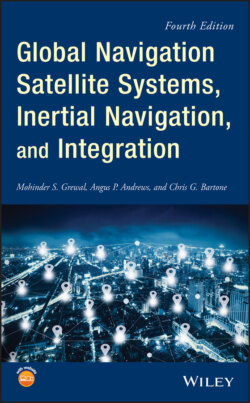Читать книгу Global Navigation Satellite Systems, Inertial Navigation, and Integration - Mohinder S. Grewal - Страница 18
1.2 GNSS Overview
ОглавлениеSatellite navigation development began in 1957 with the work of William W. Guier (1926–2011) and George C. Weiffenbach (1921–2003) at the Applied Physics Laboratory of Johns Hopkins University [3], resulting in the US Navy Transit GNSS [4]. Transit became operational in the mid‐1960s, achieving navigational accuracies in the order of 200 m and remained operational until it was superseded by the US Air Force GPS 28 years later. The Transit navigation solution is based on the Doppler history of the received satellite signal as the satellite passed overhead from horizon to horizon – a period of about a quarter of an hour. The US Navy also developed the TIMATION (TIMe/navigATION) in the mid‐1960s to explore the performance of highly accurate space‐based clocks for precise satellite‐based positioning. While Transit and TIMATION were “carrier‐phase” only‐based systems, the US Air Force 621B experimental program validates the use of ranging codes for a global satellite‐based precision navigation system. These programs were instrumental in the concepts and techniques in the development of GPS as well as other satellite‐based GNSS that we know today.
Currently there are several GNSS in various stages of operation and development. This section provides a brief overview of these systems, where a more detailed discussion is given in Chapter 4.
